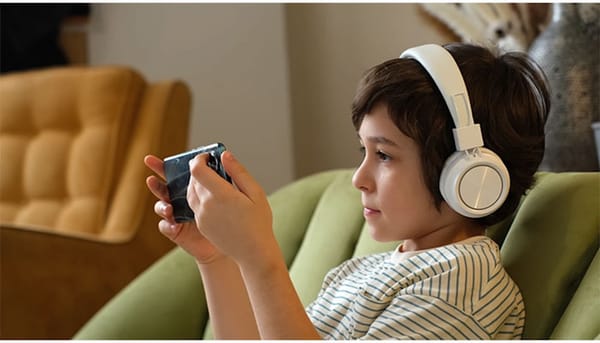Designing an office worth going back to
The key to the office of the future will be flexibility – not just flexibility about where people work, but in how to address the challenges facing workers and employers alike, taking into account physical workspace, the diversity of people’s needs and the power of technology.

First published by UNSW
Iva Durakovic, Christhina Candido, Samin Marzban
Building the workplaces of the future means rethinking how office space is used and what flexibility means.
The key to the office of the future will be flexibility – not just flexibility about where people work, but in how to address the challenges facing workers and employers alike, taking into account physical workspace, the diversity of people’s needs and the power of technology.
For many people, COVID-19’s reordering of work routines has lingered, even after daily life mostly seems to have returned to something like before. But in the process, it has exposed some of the vulnerabilities and strengths – and possibilities – in how people relate to their workplace, especially office environments.
It has also led to an ongoing tension. Employers demand a full return of workers to the office. Employees expect flexible working arrangements such as working from home and offices that actually enable them to work better.
At the same time, technology is changing the nature of work altogether. AI and other technologies should ideally liberate us to prioritise high-value tasks. As a result, the office environment will still be needed for interpersonal learning and time – but on different terms than in the past.
Recent Australian research in workplace design and environmental psychology points to some ways to rethink how office space is used and what flexibility can mean.
At the core of these findings is the idea of people’s attachment to place and ‘placemaking’. This concept goes directly to our sense of productivity and effectiveness – that is, how much the workplace allows us to work better.
Fit for purpose
Australian property development firm Mirvac created an experimental work floor within its Sydney headquarters in 2022 to test what kinds of physical space and technology were most effective in supporting seamless hybrid work.
Designers created various workspaces using furniture, adaptable power sources, Wi-Fi and mobile technologies to facilitate different tasks in each area.
Teams were given a single instruction: choose a space and use it within a set timeframe. The specifics of how, why and when they used the space were left up to them.
Our study of the pilot underscored the importance of responsive and dynamic environments to boost the productivity of high-performance teams.
Being able to reconfigure office elements allowed users to form new work habits and patterns.
This flexibility – combined with clearly defined space functions and strong leadership empowering employees’ working styles – maximised the way technology could support team connectivity and collaboration.
Many workers are finding themselves re-evaluating the time and cost of a commute to the office.
That calculation involves some fundamental questions: How much learning, mentorship and growth do I gain from the personal interactions made possible in the office? How connected, aligned, supported, secure and safe – and proud – do I feel in this environment?
Our home offices or other working environments, crafted by necessity during the height of the pandemic, are often more fit for individual and highly focused work than what a typical office can offer.
Employers need to consider how to respond to this shift in expectations.
Before forcing workers back full-time into the same old open-plan environments, they should be evaluating whether these spaces are fit for purpose in terms of the tasks, health and well-being of the occupants they support.
Prioritising user experience, fine-tuning work spaces to support user needs and designing for health and well-being will deliver higher levels of satisfaction, perceived productivity and creativity.
Connection to place
The physical workplace is tied to people’s deeper psyche as a place of safety, belonging and ritual.
We all operate to some degree by the mechanisms of what environmental psychologists term ‘place attachment’ (the emotional bonds we form with physical and symbolic places over time) and ‘place identity’, an aspect of the self relating to our preferences, values, feelings and goals – essentially, the inherent connection between people and place.
Connection to place is part of our ‘brain wiring’ for completing tasks – how we navigate routines and make transitions between different types of thinking.
The office is a place to form professional networks and communities.
Our ability to read non-verbal cues, to overhear and sense the ‘vibe’ of our teams, organisations and management reassures us. It underpins the authenticity of our interactions, fostering deeper levels of trust and cultural bonds through shared experience. Those bonds help us understand we are a part of a community.
Research tracking Australian worker’s work-from-home experiences throughout the Australian Covid lockdowns of 2020 revealed how ingrained the physical office environment was to knowledge workers’ sense of professionalism and effectiveness.
For managers, being disconnected from the office environment cut to the core of their ability to do their job – managing people – and affected their sense of professional identity.
For employees, particularly among younger generations, the pandemic confirmed what is often being leveraged today to bring workers back into the office: the connectedness, camaraderie and psychological safety that come with our feeling of belonging to our workplaces.
Building trust
One of the biggest drivers in the push back to the office has been lack of leadership trust, which is always a barrier to new ways of working.
Managers want to keep a tight rein on employees.
But overly controlling and distrustful management directly correlates to higher reporting of psychosocial hazards, including poor physical work environment, lack of organisational justice and weaker workplace relationships – none of which supports positive performance.
An individual’s sense of trust from coworkers holds the key to almost everything – it affects a person's connection and cohesion with the team, affirms their value to their team and promotes greater autonomy and ownership of work.
People feel more creative, energised and able to work on collaborative tasks and idea generation when they are physically together.
Emotional intelligence might be the next frontier for AI and other digital systems, but there is no replacement for the human response triggered by real face-to-face encounters.
Clear choices
The experiences of adapting to new work routines and technologies during the pandemic have fundamentally re-routed our neural pathways.
People have adjusted their work styles to match the optimum tools and spaces to different tasks – video-conferencing is great for information transfer, but in-person is better for creative sparks, while the home office is ideal for long stretches of deeply focused work.
As much as in-person work may promote connection, knowledge-sharing and creativity, other individual work activities have been shown to be more effective when done elsewhere. Remote working is a skill we can improve over time.
Our research suggests that focusing on guidance within clear functional parameters empowers teams to make the most of their work spaces and working styles – rather than imposing standardised experiences. Positive experiences naturally emerge within an optimised framework of tools and support.
Choices about where, how and when we work have also opened increasing opportunities for neurodiverse workers and workers with disability or other competing responsibilities, enabling them to manage their needs autonomously for optimal work output.
An Australian-based study of the impact of working from home found direct long-term benefits for workers living with disability.
From an employee perspective, flexibility means autonomy, choice and better integration of work with life.
For employers, there's no single correct solution, but putting trust in your teams, supporting their work styles with the right tools and the right spaces, and providing structural support for their relationships to flourish are going to be what keeps them coming back.
Iva Durakovic is an interior architect and lecturer at UNSW Faculty of Arts, Design and Architecture with over 10 years of industry experience delivering high-profile, award-winning workplaces. Her research investigates behavioural impacts of workplace design, its physical and experiential performance. She sits on IWBI’s Movement Concept Advisory, Green Building Council of Australia Fit-outs expert reference panel, and leads workplace projects at the Sustainable and Healthy Environments (SHE) Lab at the University of Melbourne.
Christhina Candido is an associate professor at the University of Melbourne Faculty of Architecture, Building and Planning, where she directs the SHE (Sustainable and Healthy Environments) Lab. Her research bridges the gap between design and performance from an end-user perspective. She is an IWBI Global Research Advisor and WELL Faculty member.
Samin Marzban is a lecturer with the School of Civil, Mining, Environmental and Architectural Engineering at the University of Wollongong, Australia. Her research focuses on Indoor Environmental Quality, Post-Occupancy Evaluation, performance-based design, optimization, and energy efficiency. As a member of the SHE Lab, she led award-winning papers focus on Australian workplaces.
This research was funded by the Australian Government through the Australian Research Council's Discovery Projects funding scheme (project DP190100705) and the Alastair Swayn Strategic Research Grant.
Originally published under Creative Commons by 360info™.




